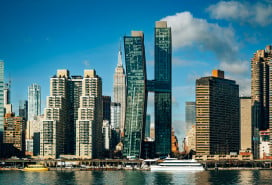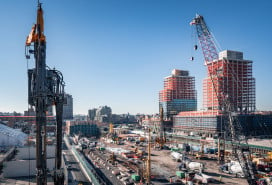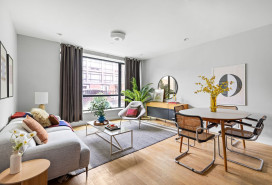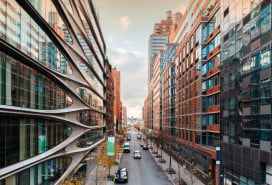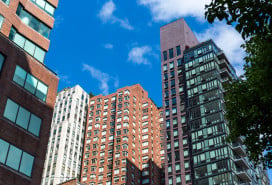Decoding the "porte-cochere," the amenity du jour—and of old
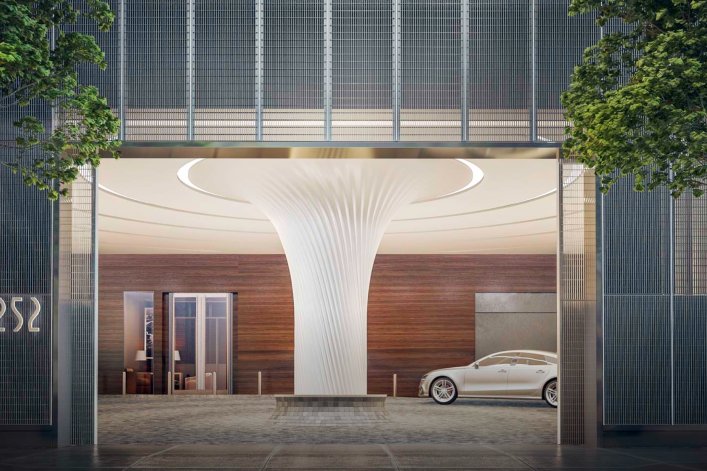
Sometimes, it seems like there are as many real estate jargon terms out there as there are actual apartments. In Bricktionary, we decode them, one buzzword at a time.
Expensive as they can be to install, amenities are still just as much subject to fads as say, neighborhoods and decor. And lately, the "porte-cochere"—formerly a feature found in stately old prewars—has been having a bit of a moment.
Literally translated, the term means "porch gate" or "carriage porch," but really, "it describes a covered entrance to the building where a vehicle can pull and discharge its passengers," explains Libby Ryan of Compass. (As with lots of real estate terms, when in doubt, just say it in French and it'll automatically sound fancier.)
The porte-cochere is a standout feature in classic old buildings like the Apthorp as well as 1 and 2 Sutton Place South, but in a post-carriage era, many old porte-cocheres are now permanently gated. (The Dakota's is a notable example.) "A lot of them have been repurposed, and are now gardens, only open to pedestrians," says Ryan. However, more basic versions of the porte-cochere have also been known to crop up in postwar buildings like Manhattan House, as Town broker Ginger Brokaw points out.

A more old-school version of the porte-cochere can be found at 2 Sutton Place South on the Upper East Side.
But more recently, as the New York Times reported over the summer, porte-cocheres appear to be catching on in new luxury developments, with buildings such as 252 East 57th Street, 20 East End Avenue, and 111 West 57th Street all touting their high-design porte-cocheres as an added bonus for convenience as well as privacy, since you won't be visible from the street as you enter the building, an appealing perk for celebrities and other high-profile residents.
For mere mortals, though, it's handy to be able to pull right up to easily unload luggage, shopping bags, strollers, etc. (After all, who among us hasn't flailed to get a load of grocery bags out of a cab while traffic whizzes by?) And if you actually own the car—as opposed to just having a cab pull in—many buildings offer parking services, too—the equivalent of full-time valet.
"It's a throwback to a convenience that can also be a sign of classic architecture," says Brokaw. "Think about it: If you're driving back to the city or coming from the airport and your car's filled with luggage, wouldn't you like to just pull in, and have the building staff come out and take your bags and park the car?"
Related:
How is a carriage house different than a regular townhouse?
What makes a first-floor apartment a "maisonette"?
What do people really mean when they say a place has "good bones"?

